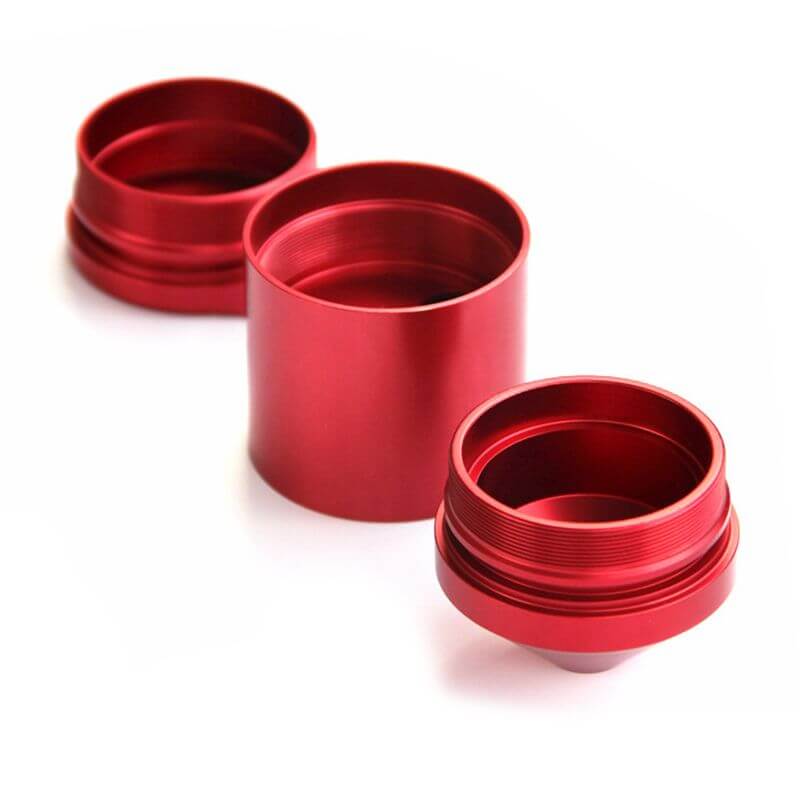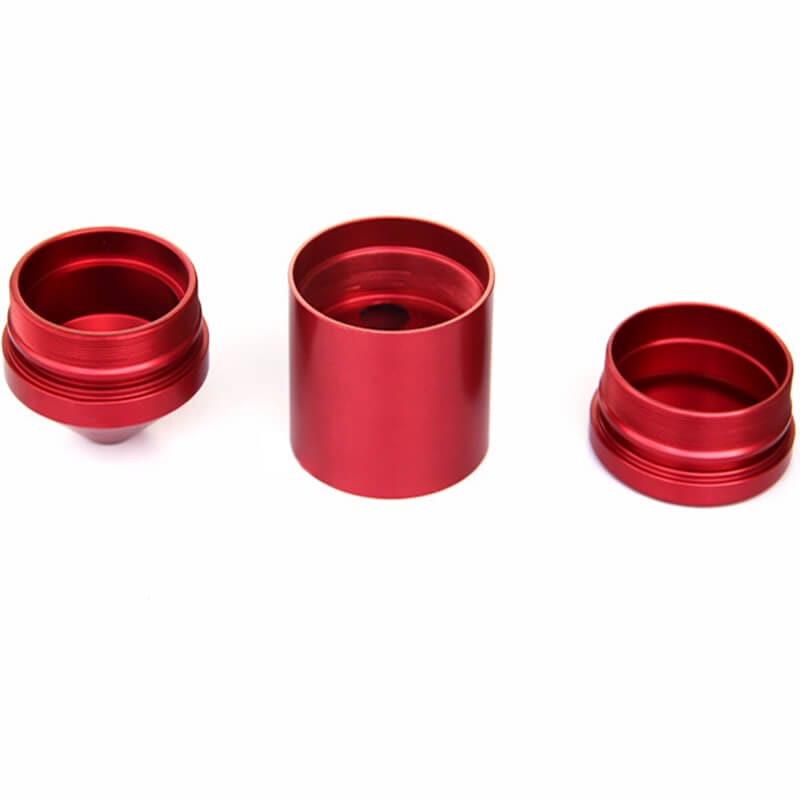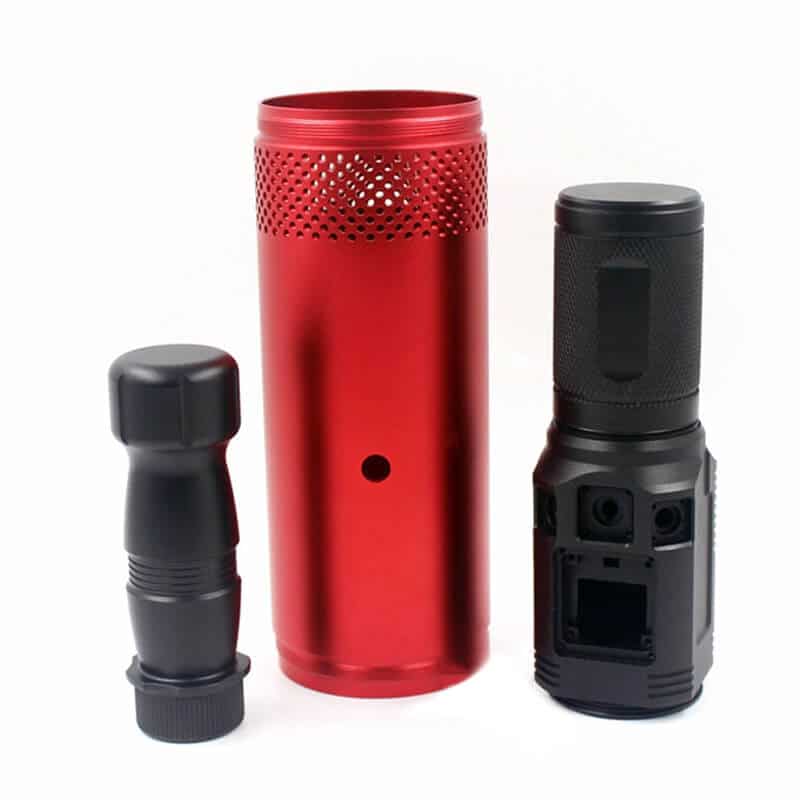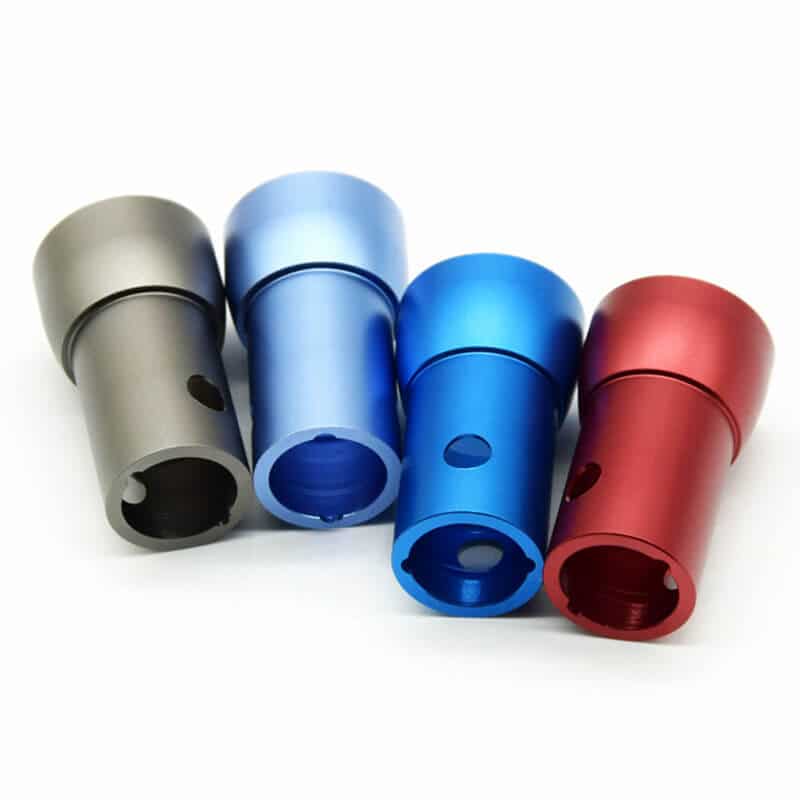Description
Features of Hard Anodizing
- Hard surface, with a hardness up to about HV500
- 25-250 ms thick oxidation coating
- Good adhesion. Oxidation properties can be produced by hard anodizing: The oxidation coating produced in the aluminum alloy with a 50% permeability adheres to the aluminum alloy surface by 50%.
- Good insulative, with a breakdown voltage of up to 2,000 V5. Good abrasion resistance: The maximum abrasion resistance index of the 2% aluminum alloy is 3.5 mg per 1,000 turns. The abrasion indexes of other alloys should not exceed 1.5 mg per 1,000 turns
- No toxicity, and no harm to humans. The electrochemical process of anodic oxide coating treatment used for production is harmless, so hard anodized aluminum alloys are used for some products to meet the environmental protection requirements in a lot of industrial machines.
Technical Keypoints and Application Scope of Hard Anodizing
Hard anodizing is a kind of anodizing and thick coating anodizing is a special anodizing with aluminum and aluminum alloy surface treatment technologies.
In this method, the anodized coating is 250 μm thick, pure aluminum can acquire a maximum 1500kg/mm2 anodized coating hardness, and the aluminum alloy can acquire an anodized coating with a microhardness of 400~600kg/mm.
For the hardness value, the anodized coating is larger than the external coating, or the blocking coating is larger than the said anodized coating for the porosity. Because the oxidation coating with small pores can adhere to various lubricants to increase abrasion resistance.
The oxidation coating has very poor thermal conductivity, with a melting point of 2050 ℃. It has a large resistivity with closed treatment, and it is breakdown voltage is 2,000 V.
As an ideal heat-insulating coating, it features high corrosion resistance and high abrasion resistance as well as a series of advantages such as good insulative and high substrate metal bondability, thus having wide application in national defense and mechanical part manufacturing industries.
Different from ordinary colored oxidation, after aluminum hard anodizing, the mechanical strength index is mandatory and cannot be vague.
In order to guarantee hardness, the oxidation temperature must be low, between -5 – 5℃. Because a large amount of heat is produced during aluminum oxidation, the 100℃ boiling temperature can be reached very quickly.
You can imagine how important cooling measures are! This greatly increases the equipment expenditure (for air compressor, refrigerator and electrolytic bath with a cooling interlayer).
Aluminum has a larger resistance after being electrified, which requires to order of a high-voltage rectifier, and this further increases the expenditure.
These two are the main items of expenditure. What size of the rectifier to buy in the beginning depends on the overall area of the part to be oxidated, which is usually calculated by 2-5A/dm².
Hard oxidation is mainly applicable to the fields with requirements of high abrasion resistance, high thermal resistance and high insulative of aluminum and aluminum alloy parts, including various cylinders, pistons, air valves, cylinder linings, bearings, airplane cargo space, oblique bars and guide rails, hydraulic equipment, steam propellers, comfortable plate mangles, gears and buffers.
Traditional hard chromium electroplating features low costs, but the coating has a disadvantage that the measurement of mechanical fatigue strength for aluminum and aluminum alloys will be affected when this coating is too thick.
Besides, it is not convenient for the disposal of liquid wastes such as the electroplating liquid. The hard anodizing process will gradually replace the traditional hard chromium electroplating.
In conclusion, to guarantee both the quality and the hardness of CNC aluminum components is a machining method hard to handle. It is not difficult for a custom CNC milling aluminum parts manufacturer with rich experience but very hard for a manufacturer that just started up or has insufficient experience.
 (+86) 188-2253-7569
(+86) 188-2253-7569


